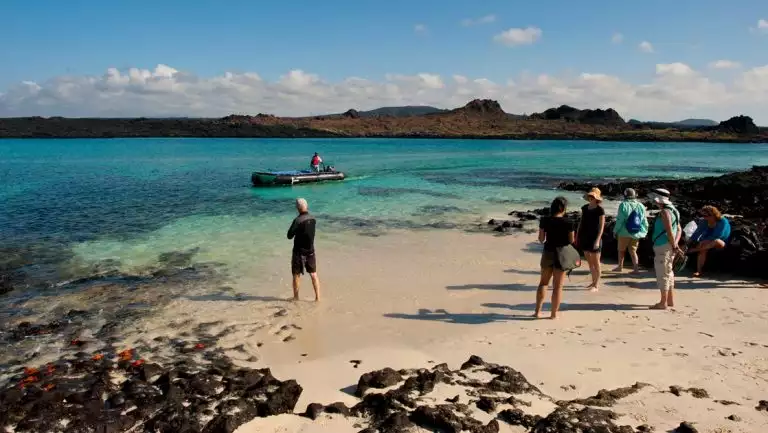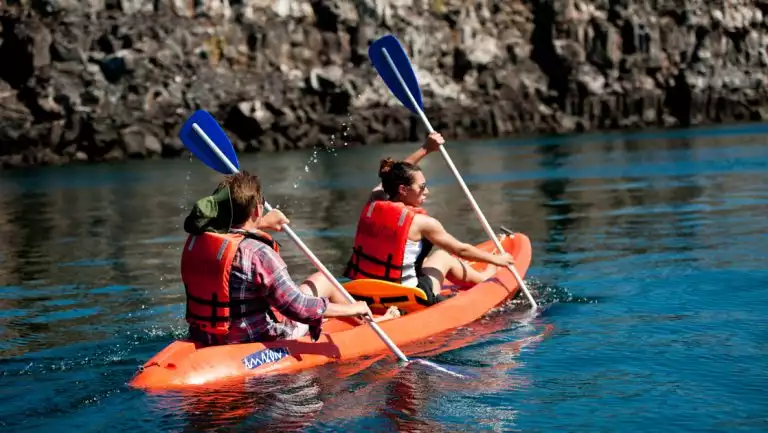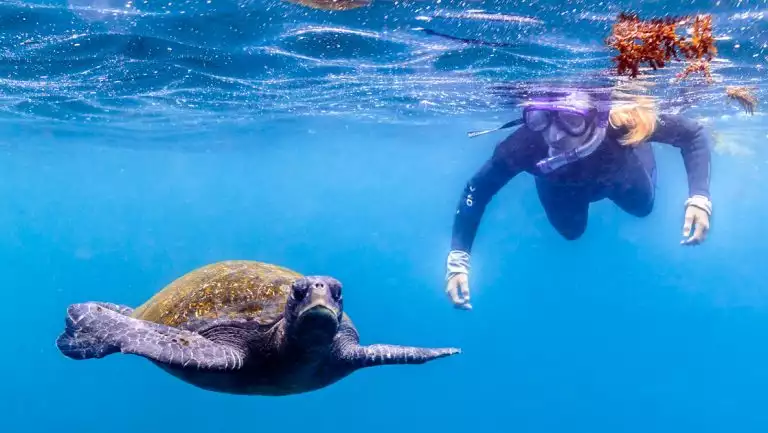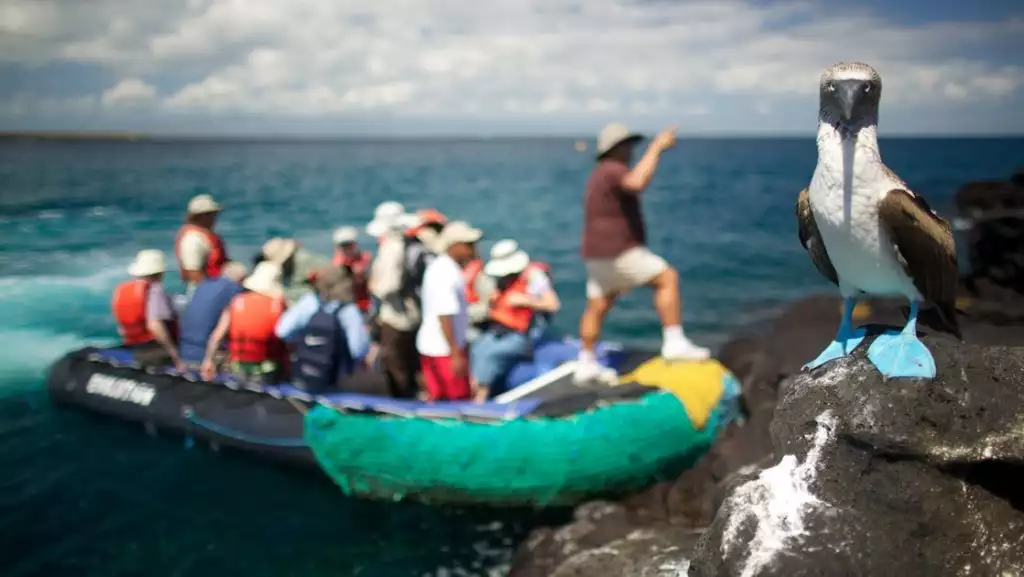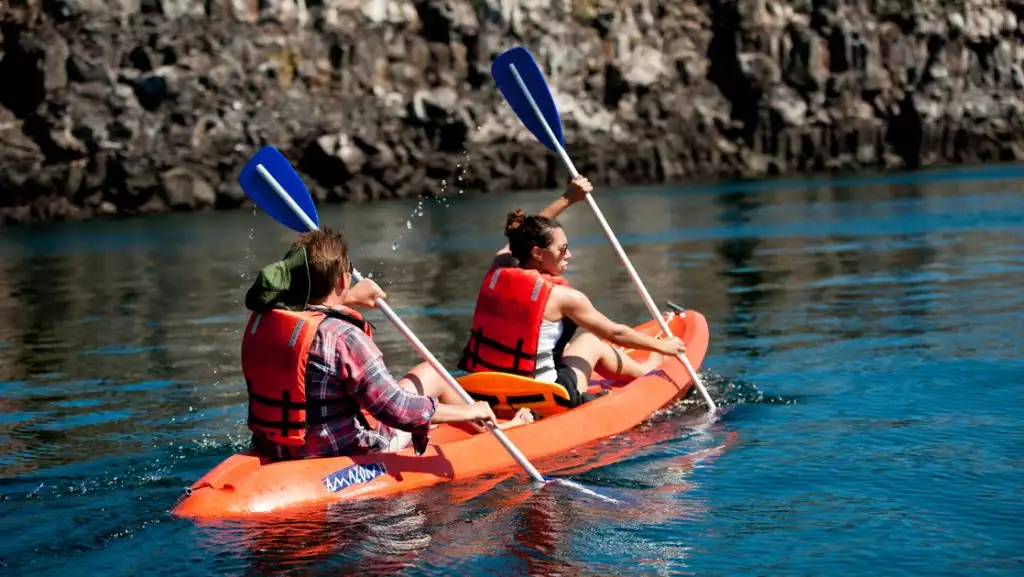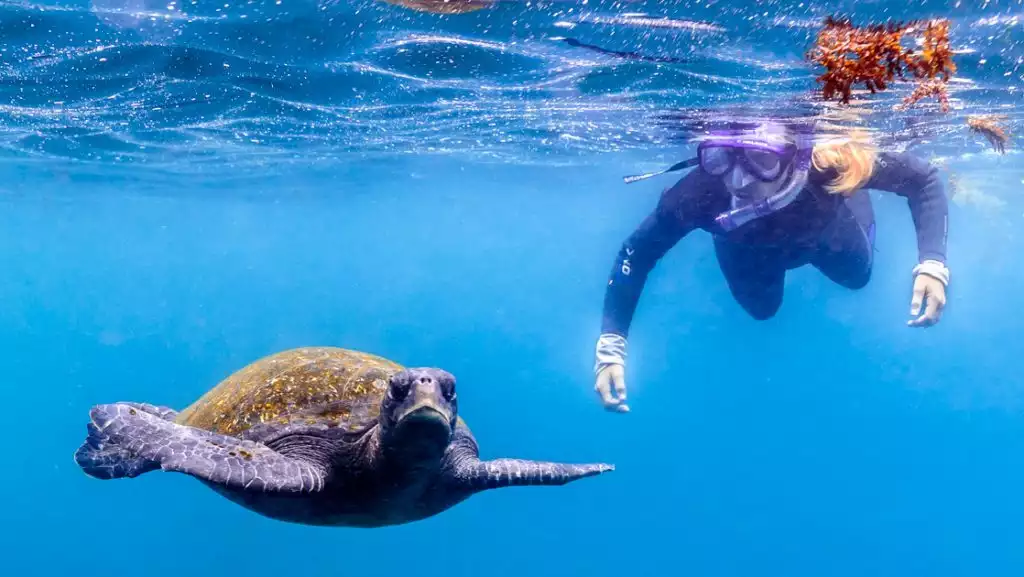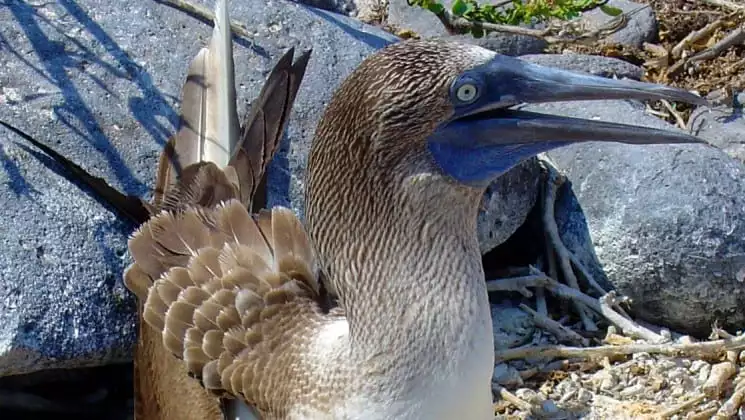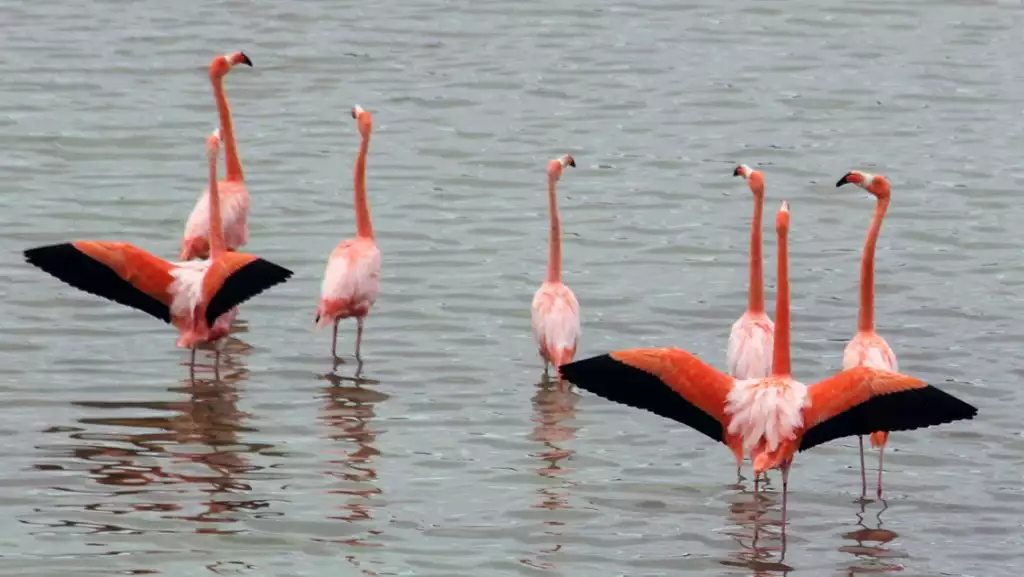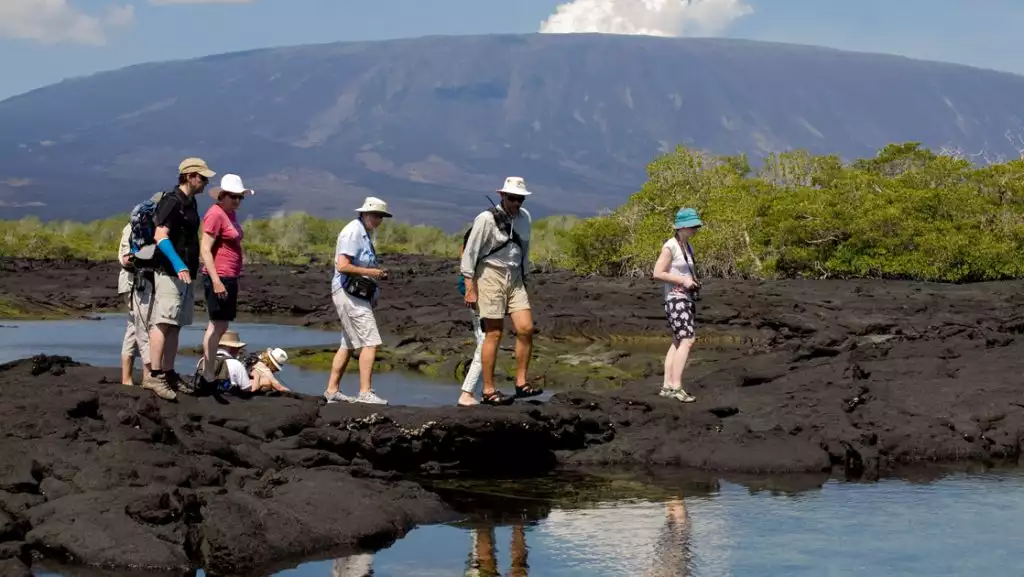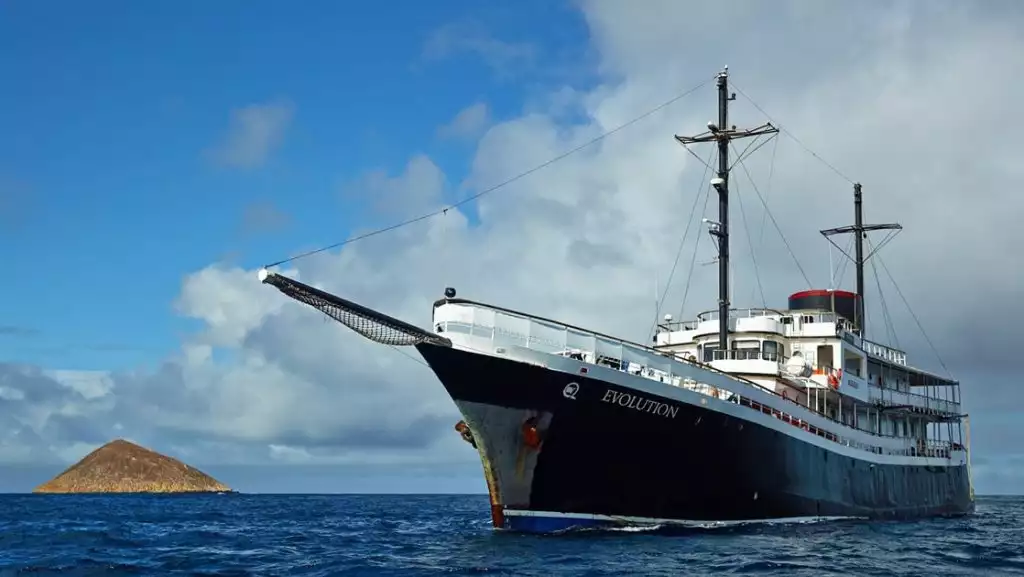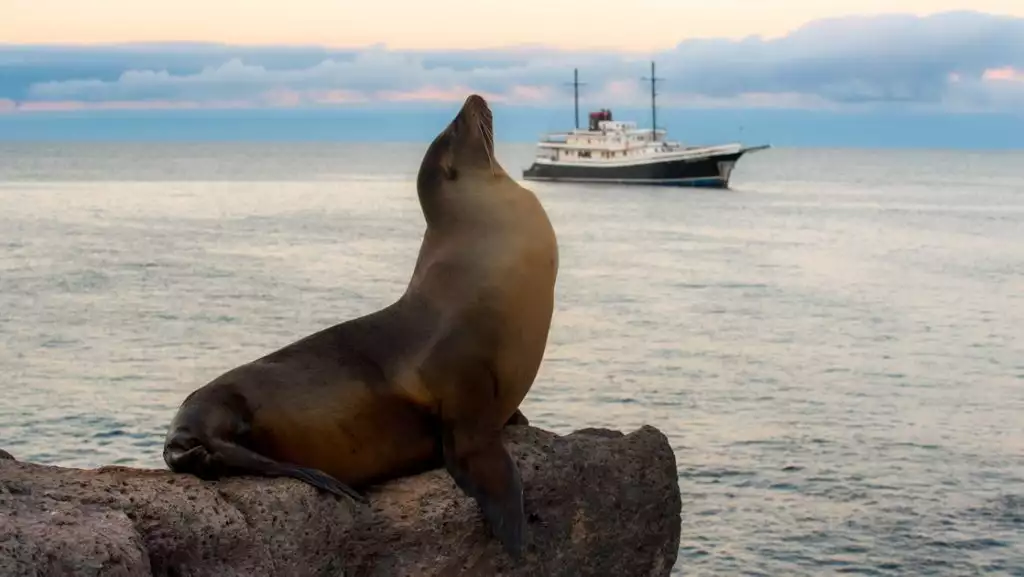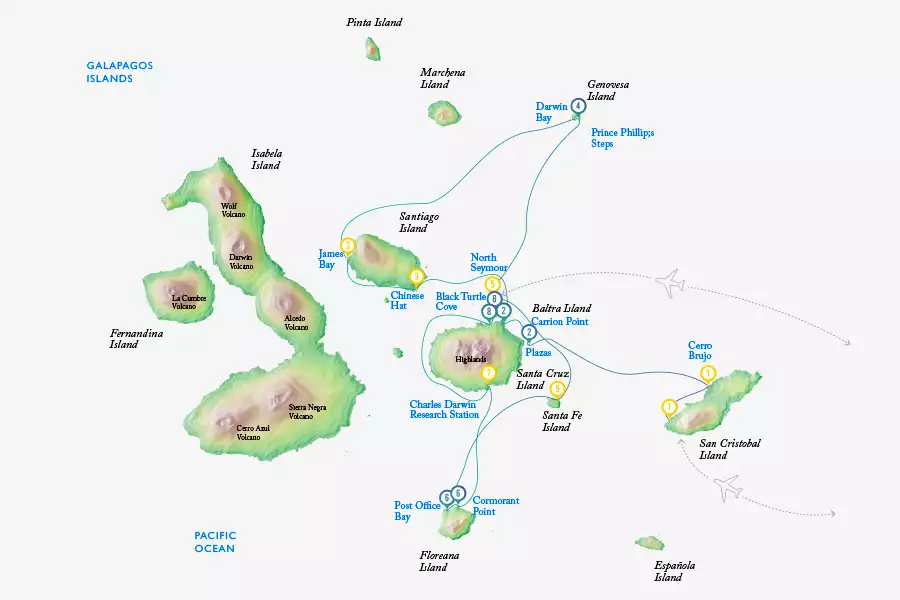Included
Comprehensive pre- and post-cruise information material; accommodations aboard Evolution; all meals and snacks; all transfers in Galapagos; guides and activities throughout the cruise; limited use of Wi-Fi; select wines, local beer, cocktails, spirits, soft drinks, juice, coffee, hot chocolate, water and tea are included throughout the cruise; use of snorkeling equipment, 3mm long wetsuits and sea kayaks, Galapagos National Park fee; Transit Control Card.
Exclusions
Round-trip Galapagos airfare; hotel accommodations in mainland Ecuador; airport transfers in Ecuador; gratuities and tips to guides, crew and staff; premium brands of wines, beer or spirits; additional wi-fi minutes; other personal expenses.
(For expeditions booked prior to March 9, 2023: Please refer to your invoice for your payment and cancellation terms.)
Payment & Cancellation
In order to confirm this trip, a non-refundable deposit of $900 is required per person at time of booking. The balance of the trip price is due 90 days before the departure date. Special group (4+ staterooms) and holiday payment and cancellation terms may apply, inquire for details. Guests who must cancel their trip for any reason must do so in writing. Standard cancellations are subject to the following per-person penalties, based on number of days prior to departure:
Up to 65 days – 100% of deposit
64 to 0 days – 100% of total trip cost
Terms & Conditions
This trip is subject to AdventureSmith Explorations’ Terms and Conditions. Please read this information carefully and call us if you have any questions. A Traveler Information Form, which includes a release of liability, must be completed and signed by all travelers. Your Adventure Specialist will send you a unique link to complete this form along with a packing list and extensive pre-departure and travel insurance information upon booking confirmation.
Arrival & Departure
Most flights to the Galapagos will depart Quito or Guayaquil between 6:00am and 11:00am on Day 1 and return between 2:00pm and 6:00pm on the final day. We highly recommend travelers arrive to Ecuador two days prior to their Galapagos cruise. If you would like assistance with international flights, please visit our Booking Flights resource page. Note: Your passport must be valid 6 months after your Ecuador trip concludes.
Internal Flights
Flights from mainland Ecuador (Quito or Guayaquil) to the Galapagos are not included in the cruise price, but are arranged for you by AdventureSmith Explorations through your ship. Your Adventure Specialist will book these flights for you on the scheduled Galapagos flight for your particular departure. Airfares vary by departure; your Adventure Specialist will detail these for you in their proposal and on your invoice. On flights from mainland Ecuador to the Galapagos Islands, baggage weight limits are currently 50 pounds for checked items, and 17 pounds for carry-on plus a small personal item. Subject to change.
Activities
There are numerous opportunities to swim and snorkel. The underwater experience is an integral part of any Galapagos cruise. We encourage all travelers to try snorkeling. Snorkeling gear (mask, snorkel, fins, floating vest and net bag) are provided. Wetsuits are available, either free of charge or to rent for a fee (see Inclusions and Exclusions), and are recommended from June to December.
Daily excursions from the boat to the islands will be made in pangas (dinghies). Trip members will hike from the landing point to specific areas for wildlife observation. Hiking time for most landings will be a couple of hours round-trip with lots of time to stop to study, photograph and enjoy the flora and fauna. Some landings are dry but many are “wet,” requiring cautious footing on slippery rocks. The boat staff will be on hand to assist.
Room Configuration
Single travelers wishing to book a double-occupancy cabin may do so at a 50% supplement of the per-person listed rate in Staterooms, and a 75% supplement of the per-person listed rate in Suites. A 100% supplement of the per-person listed rate applies on holiday departures (Christmas and New Year dates).
Families & Children
Children 15 years and younger receive a 15% discount off the cruise fare (not available for holiday departures). A maximum of three children discounts are allowed per family per booking. There is a minimum age of 5 years, but exceptions may be made for designated family departures and/or private charters.
Travel Insurance
Emergency medical evacuation insurance is mandatory for this trip, with a minimum recommended coverage of $50,000 per person. In addition to the emergency evacuation insurance, we highly recommend our travelers protect their travel investment with insurance. Our partners at Travelex Insurance offer a variety of plans and policies to fit every trip and budget. Coverage for a pre-existing medical condition is also available if you purchase the Travel Select plan within 15 days of the initial trip payment; refer to plan details. Learn more about travel insurance or get a free quote.
We strongly recommend that you travel to Galapagos Province with travel insurance that contains medical coverage. Be certain to bring your insurance plan ID documents with you when you travel.
Itinerary Notes
Use the itinerary as a guide only. Itineraries may be altered due to weather, wildlife, National Park regulation or at the captain’s discretion. Due to the active nature of volcanoes in the Western Galapagos, alternate excursions may be offered. The ability to be flexible makes this type of small ship cruising unique.

